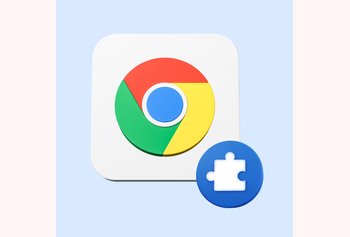Mastering the Customer Lifecycle: Strategies, Key Metrics and Examples
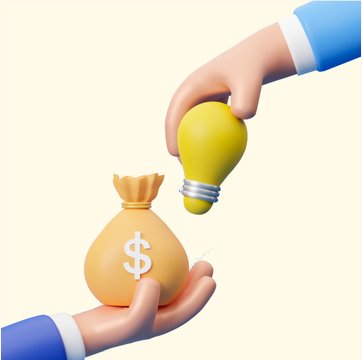
Table of contents
Have you ever wondered why some brands keep you coming back while others fade from memory after a single purchase?
The answer lies in how they manage your journey as a customer.
You, as a customer, are on a journey called the customer lifecycle. It begins when you discover a product and ends when you become its loyal advocate.
This is also the journey your customers take when they discover your product or services.
It’s key for any business, not just marketers, to know this process. It helps you build truly lasting relationships with your customers.
This article will explore the key stages of the customer journey. We’ll see how mastering the customer lifecycle can turn one-time buyers into loyal brand advocates.
Table of Contents
- What is the Customer Lifecycle?
- Why Understanding the Customer Lifecycle is Critical
- Key Stages of the Customer Lifecycle
- How to Measure Success at Each Stage of the Customer Lifecycle
- Build Meaningful Connections with Your Customers
What is the Customer Lifecycle?
The customer lifecycle describes a customer’s journey with a brand. It covers all stages, from the first discovery to becoming a repeat buyer or advocate. Unlike the buyer’s journey, which focuses on the steps leading to the first purchase, the customer lifecycle extends beyond the sale.
Think of it like planting a tree versus buying fruit from a store. The buyer’s journey is like buying fruit. It’s a transaction that ends once you have what you need. In contrast, the customer lifecycle is like planting a tree and nurturing it through seasons. You’re cultivating a relationship that grows and bears fruit over time.
For example, when you purchase a product, the buyer’s journey ends. If the brand keeps engaging with you, they’re guiding you through the customer lifecycle. They’re offering support and rewarding your loyalty.
Why Understanding the Customer Lifecycle is Critical
Recognizing the customer lifecycle allows businesses to optimize every interaction with their customers. It helps brands build deeper, more valuable relationships that lead to repeat business and advocacy. Here are some reasons why you should understand the customer lifecycle and make every touchpoint count:
- Higher Customer Retention: As the famous finding goes, it costs five times more to acquire a new customer than to retain an existing one. This means keeping existing customers is important to grow your company’s revenue.
- Personalized Experiences: By tracking each stage of the life cycle, businesses can tailor communication and offers to fit individual needs—making them stand out from competitors.
- Increased Customer Lifetime Value (CLV): Loyal customers tend to make repeat purchases, increasing their overall value to the brand.
Key Stages of the Customer Lifecycle
The first step in building a journey that leaves a lasting impact on your customer is understanding each stage of the customer lifecycle. When you know what each stage is designed to do and what the customer expects from it, you can then create the right touchpoints.
So, let’s take a look at every stage of the customer lifecycle and quick strategies that can help you get started:
a. Reach
In the Reach stage, potential customers first become aware of your brand. This can happen via social media, search engines, ads, or word of mouth. The goal here is to make a strong, positive first impression that captures attention.
For example, a customer may be browsing Instagram and come across an ad for your product. They may not know much about your brand. But, the ad piques their interest.
This stage is crucial as it lays the foundation for all future interactions. It’s your chance to get noticed in a competitive market, positioning your brand in the customer’s mind.
Strategies You Can Implement:
- Create high-quality SEO content: Publish blog posts that answer common questions. Use relevant keywords to optimize them. You can use tools like Google Search Console or Ahrefs to track performance and improve rankings.
- Engage potential customers on social media: Reply to comments, host giveaways, and share valuable content. This will encourage users to follow your page or visit your website. You can use tools like Hootsuite to help you manage this across platforms.
- Use lookalike audiences in social media ads: Use Facebook or Instagram’s feature to target personas similar to your existing customers. This ensures your ads reach people who are more likely to engage with your brand. You can learn more about this here.
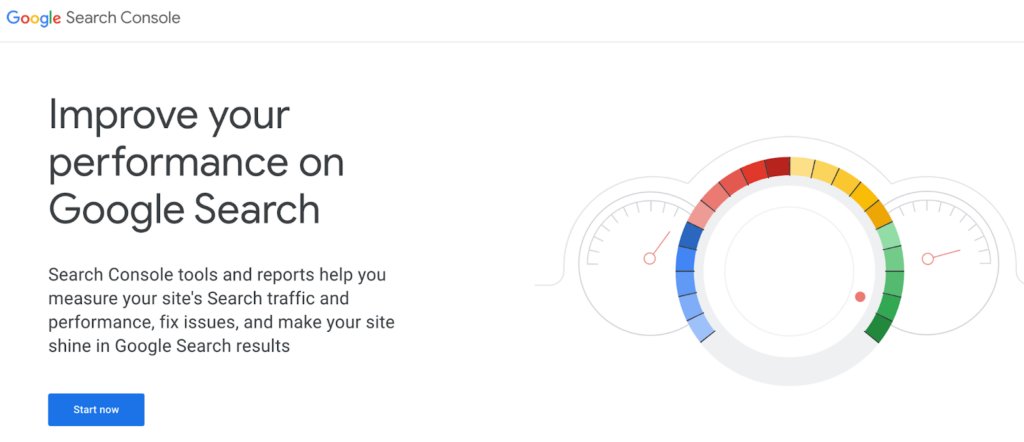
b. Acquisition
Once a customer’s interest is piqued, they enter the Acquisition stage. At this point, the customer is exploring your offerings. They visit your website, read reviews, or sign up for your newsletter. This phase must give them the information to make an informed decision.
A customer might see an ad and land on your product page. Then, they would compare your offerings with competitors.
Offer educational content that meets their needs. If done right, the Acquisition stage moves the customer one step closer to making a purchase.
Strategies You Can Implement:
- Create lead magnets: What is a lead magnet? It’s when a business offers something valuable (e.g., a free eBook, checklist, or access to a webinar) in exchange for contact information. Here, tools like HubSpot can automate lead capture and nurture.
- Personalize follow-up emails: Use email marketing software to send personalized content that aligns with the customer’s activity on your website (e.g., product recommendations based on what they viewed). This increases their chances of moving forward with a purchase.
c. Conversion
The Conversion stage, as the name suggests, is where the customer makes the decision to purchase. This is a critical turning point. All efforts to reach and acquire the customer culminate here. After exploring your product, reading reviews, and maybe talking to a sales rep, the customer is ready to buy. A smooth buying experience is a must at this point. Any friction could lead to cart abandonment.
For example, if the customer finds your checkout process too complicated, they might reconsider their decision and leave without completing the purchase. So, ensuring a seamless and user-friendly checkout process is necessary in this phase.
Strategies You Can Implement:
- Optimize your website for mobile users: Ensure that your checkout process is mobile-friendly, as more customers shop from their phones. Here you can use this free tool by SEOmator to check if your website is mobile-friendly.
- Offer one-click checkout options: Tools like Shopify can offer fast, one-click payment processes that reduce friction during checkout. Remember, a complicated checkout process can lead to high cart abandonment rates—so make sure you offer a quick and secure checkout.
eCommerce platforms use one-click checkouts to minimize cart abandonment rate. - Use exit-intent popups: Show a discount or a special offer when users are about to leave the checkout page without completing their purchase. Apps like OptinMonster can help with this.
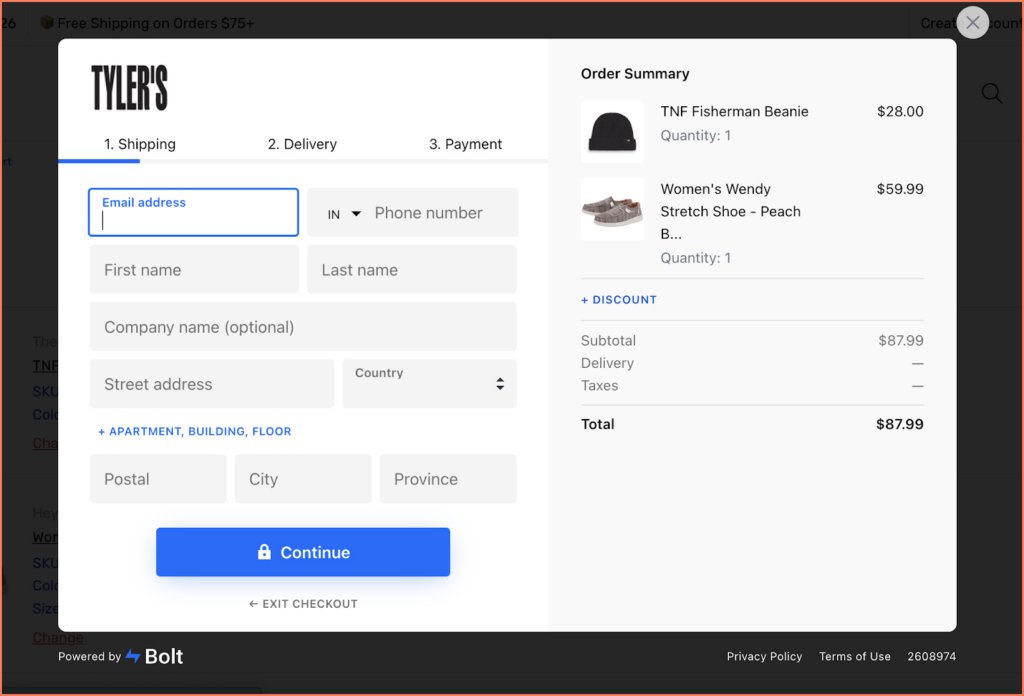
d. Retention
Retention focuses on keeping customers engaged after their initial purchase. The goal is to build long-term relationships that encourage repeat purchases. Once a customer has purchased, it’s essential to maintain communication and offer value to ensure they don’t forget about your brand.
For example, a customer who buys a product may receive an email follow-up with tips on how to use the product and a discount for their next purchase. This post-purchase engagement strengthens the customer’s connection with your brand and increases the likelihood of repeat business.
Strategies You Can Implement:
- Use personalized email campaigns: After purchase, follow up with personalized emails that offer product care tips, complementary product recommendations, or exclusive discounts for future purchases. Platforms like Klaviyo can automate these processes.
- Launch a tiered loyalty program: Offer rewards for repeat purchases, and introduce exclusive offers or discounts for higher tiers. It’s important to understand what incentives will work for your customers before building a loyalty program. You can use tools like Smile.io to help manage your loyalty programs once you design the right one. Sephora understands its customer base well enough to offer the right loyalty program and boost loyalty.
- Gather feedback through post-purchase surveys: Use tools like SurveyMonkey to ask customers about their experience and find areas for improvement. Customer feedback helps you stay engaged with your customers while gathering valuable insights to improve your products/services.
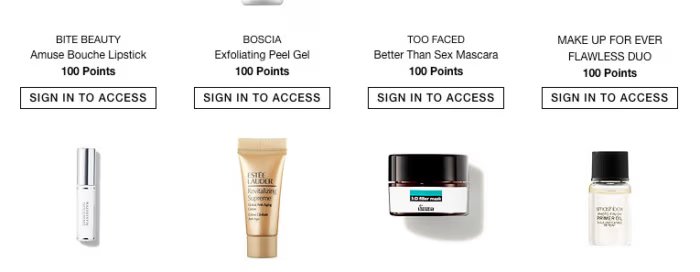
e. Loyalty
In the Loyalty stage, customers have turned into repeat buyers and brand advocates. If your customers are in this stage, voila! You’ve (almost) done it. They’ve moved beyond just being satisfied with their purchase—they trust your brand enough to make repeated purchases and even recommend your products to others. This is where the long-term value of the customer is fully realized.
A loyal customer will not only buy from you consistently but also influence others by leaving positive reviews or referring friends. For example, a customer who frequently shops with you might use a referral link to share your brand with their social circle or write glowing reviews that boost your brand’s credibility.
Strategies You Can Implement:
- Referral programs: Encourage loyal customers to refer friends or family by offering rewards like discounts or free products. Platforms like ReferralCandy can help you set up and manage these programs. PayPal has a simple yet effective referral program
- Exclusive access and VIP offers: Provide loyal customers with early access to new products or limited-time sales. This makes them feel valued and more connected to your brand.
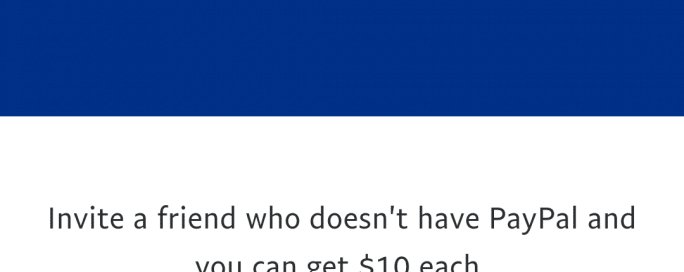
How to Measure Success at Each Stage of the Customer Lifecycle
Now that we understand what each stage in the customer lifecycle aims to do and how you can get started on them let’s move on to an equally important step.
Understanding the key performance indicators (KPIs) and metrics you should use to track your effectiveness at each stage of the customer lifecycle.
Nothing works in a set-and-forget fashion in the customer service space. And to know if something is working well enough, you need to keep track of the right metrics.
Understanding these metrics will allow you to fine-tune your strategies and make data-driven decisions that enhance customer experience and boost overall business performance. Let’s understand what these metrics are and why they are important:
Reach Stage
Impressions
Impressions track how often your content is displayed, regardless of whether it’s clicked. It tells you, “How visible is my brand?” A high number of impressions with a low CTR suggests that while people are seeing your content, it’s not engaging enough to compel action.
Why it matters: Impressions are crucial in brand awareness campaigns, especially in the initial stages of reaching new audiences. It’s like being at a trade show—you want as many people as possible to see your booth, even if they don’t stop to engage immediately. By increasing impressions, you’re laying the groundwork for future engagement.
Click-through Rate (CTR)
CTR measures the effectiveness of your ads, emails, or social media posts in getting people to engage. It shows the percentage of people who clicked on your link after seeing it. Essentially, it answers the question, “Is my content compelling enough to nudge people to take some action?”
Why it matters: If your CTR is low, it could mean that your message isn’t resonating with your audience. Think of it like passing by a billboard on the highway—if it doesn’t grab your attention, you won’t make a mental note to visit that store. To improve CTR, businesses might need to refine their messaging, improve their call-to-action (CTA),or A/B test different creative assets.
Acquisition Stage
Customer Acquisition Cost (CAC)
CAC tells you how much it costs to acquire a new customer, factoring in all marketing and sales expenses. It answers the question, “How efficiently am I turning leads into customers?” It’s like knowing how much fuel you’re burning to get your car from point A to point B.
Why it matters: A high CAC might indicate inefficiencies in your marketing or sales funnel. For example, if you’re spending $200 to acquire a customer who only brings in $50 in revenue, it’s clear that something in your strategy needs adjustment. Lowering CAC often involves improving lead quality or optimizing your marketing efforts to target more qualified audiences.
Lead Conversion Rate
This metric measures how effective your efforts are in turning leads into paying customers. It answers the question, “How well am I nurturing my leads?” A low conversion rate might suggest that while you’re capturing a lot of leads, they’re either not ready to buy or not interested enough in your product.
Why it matters: Imagine hosting a party where a lot of people show up but few actually participate—it’s a signal that something is off. Improving the conversion rate often requires a better understanding of customer needs, offering relevant content, and engaging with prospects at the right time.
Conversion Stage
Conversion Rate
Conversion rate measures the percentage of visitors who take the desired action, like making a purchase or signing up for a service. It answers, “How effective is my website or sales process in convincing visitors to buy?”
Why it matters: If your website has high traffic but a low conversion rate, it’s like running a store where lots of people walk in but nobody buys anything. This could be due to a lack of trust (e.g., poor reviews),a complicated checkout process, or unclear product information.
Average Order Value (AOV)
AOV tracks the average amount spent per transaction. It answers the question, “How much do customers typically spend each time they buy from me?” If your AOV is low, it might be worth exploring upselling or cross-selling strategies.
Why it matters: Picture a grocery store where every customer buys one small item instead of a full cart. You want to encourage larger purchases, and you can do this by bundling products, offering free shipping for orders over a certain amount, or recommending additional products during checkout. Increasing AOV directly impacts revenue without requiring the acquisition of more customers.
Retention Stage
Customer Retention Rate (CRR)
CRR tells you what percentage of customers will buy from you over a given period. It answers the question, “How well am I retaining my existing customers?”
Why it matters: It’s much more cost-effective to keep existing customers than to acquire new ones. If your retention rate is low, it’s like running a restaurant where people only dine once and never come back. Improving CRR could involve loyalty programs, personalized marketing, or better post-purchase support.
Churn Rate
The churn rate tracks the percentage of customers who stop doing business with you. It’s like asking, “How many customers am I losing?” A high churn rate signals dissatisfaction or unmet expectations, often pointing to problems in product quality, customer service, or onboarding processes.
Why it matters: A rising churn rate is like water leaking from a bucket—you’re constantly trying to fill it up, but the faster the churn, the harder it is to sustain growth. Reducing churn might require better post-purchase support, enhanced customer education, or identifying and addressing key pain points.
Loyalty Stage
Net Promoter Score (NPS)
NPS measures how likely customers are to recommend your brand to others. It answers the question, “How loyal are my customers, and how strong is their advocacy for my brand?”
Why it matters: A high NPS indicates that customers are happy and willing to refer you to others, which can lead to organic growth through word of mouth. If your NPS is low, it’s like having regulars at a restaurant who won’t tell their friends about it, despite coming back themselves. Improving NPS might involve improving customer service, addressing recurring complaints, or delivering a more delightful overall experience.
Customer Lifetime Value (CLV)
CLV calculates the total revenue a customer is expected to bring during their relationship with your brand. It answers, “How much is each customer worth over time?”
Why it matters: Increasing CLV is critical for long-term business growth. For example, if you spend $100 to acquire a customer who brings in $1,000 in revenue over five years, the investment is worthwhile. But if that same customer only brings in $50, something’s wrong. To increase CLV, businesses often focus on customer retention, upselling, and cross-selling strategies.
Build Meaningful Connections with Your Customers
The customer lifecycle isn’t just about driving sales—it’s about building real, lasting relationships. When you understand what your customers need at each stage, you can create experiences that resonate deeply with them.
Honestly, the more you invest in this journey, the more rewarding it becomes—not just in terms of revenue but also in brand loyalty and trust. I believe the key takeaway here is that every touchpoint matters, and the small things often leave the biggest impressions.
If there’s one piece of advice I’d leave you with, it’s this: treat your customers like partners in your journey, not just buyers. Focus on building those relationships, and growth will follow.














